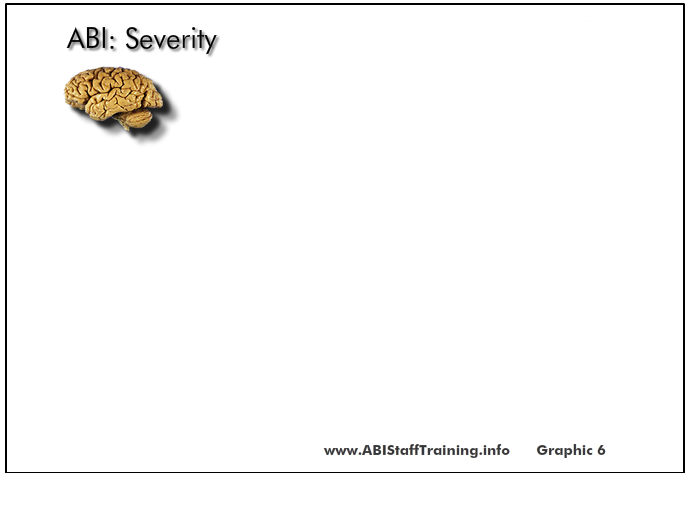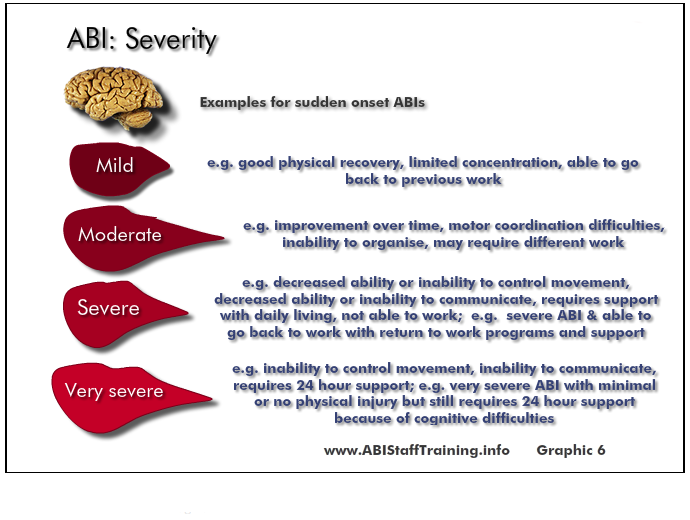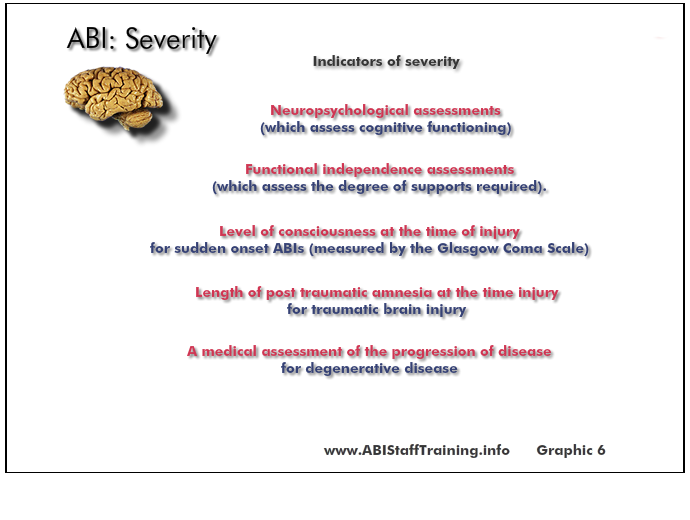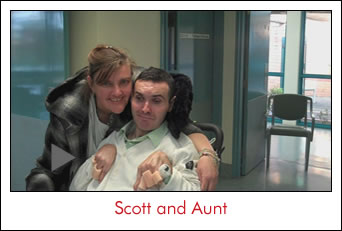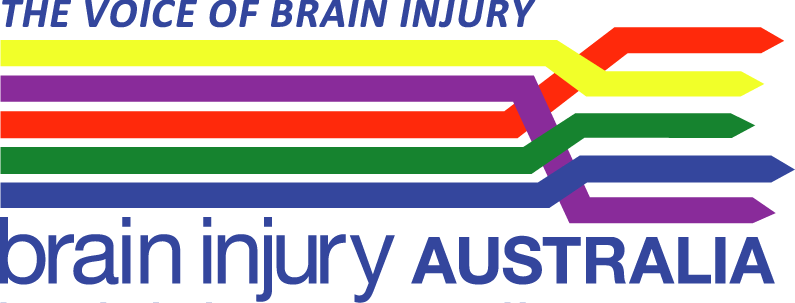- MODULE 1: Introduction to ABI
- Module Introduction
- Take the Pre-test
- a) A person’s abilities & life span
- b) What is ABI?
- c) Causes of ABI
- d) Incidence
- e) The brain
- f) Severity of ABI
- g) Cause to impact
- h) Rehabilitation
- i) Rehabilitation stages & pathways
- j) Common effects
- k) Impacts on life
- l) People with ABI
- m) Family and friends
- n) Key messages and
Tools to explore in Module 2 - o) Building skills
- Take the Post-test
f) Severity of ABI 
- i) Intro:
Graphic - ii) Ray
Video Q - iii) Scott
Video Q - iv) Indicators:
severity TBI ... - v) Indicators:
severity alcohol ... - vi) Functional
indicators Q
i) Introduction
SLIDES:
To pause: Hover mouse over slide. To continue: move mouse off slide.
To go to a specific slide: Click on slide numbers below.
i) Introduction
Common categories for severity of ABI (with examples of sudden onset ABIs are):
Mild
e.g. good physical recovery, limited concentration, able to go back to previous work
10% of all people with a mild brain injury experience lifetime problems with living and learning.
Moderate
e.g. motor coordination difficulties, inability to organise, may require different work
33% of all people with a moderate brain injury experience lifetime problems with living and learning
Severe
e.g. decreased ability or inability to control movement, decreased ability or inability to communicate, requires support with daily living, not able to work or able to go back to work with return to work programs and support.
90% of all people with a severe brain injury experience lifetime problems with living and learning.
Very severe
e.g. inability to control movement, inability to communicate, requires 24 hour support; e.g. very severe ABI with minimal or no physical injury but still requires 24 hour support because of cognitive difficulties.
ii) Ray has an ABI (5 mins)
Ray has an acquired brain injury (ABI).
Click on the image to go to the video player.
Watch a short story of her on video.
Answer the following questions
What impairments were caused?
What part of the brain was injured?
How severe was Ray's brain injury?
What was the cause of Rays ABI?
What two impairments were caused?
What part of the brain was injured?
How severe was Ray's brain injury?
iii) Scott has an ABI
Scott has an acquired brain injury (ABI).
Click on the image to go to the video player.
Watch a short story of her on video.
Answer the following questions
What impairments were caused?
How severe was the injury?
What was the cause of Scott's ABI?
What impairments were caused?
How severe was the injury?
iv) Indicators for severity for TBI, stroke and hypoxia-anoxia
For ABI caused by trauma, stroke and hypoxia-anoxia there is an indication of the severity of the injury at the time of the injury.
Injuries from these causes have a sudden onset. At the time of the injury the indicators of the severity of the injury are:
• the level of consciousness (measured by the Glasgow Coma Scale)
• the length of unconsciousness.
For TBI an additional indicator at the time of the injury of the severity of the injury is the length of post traumatic amnesia ( a period during which the person is not orientated to time, place, person, and is unable to learn, and may display disinhibition, irritable or agitated behaviour).
These indicators allow an initial assessment of the degree of severity to be made at the time of the injury.
v) Indicators for severity for alcohol, tumours and degenerative neurological diseases
For injuries caused by alcohol, tumours and degenerative neurological diseases indicators such as length of unconsciousness do not apply.
The severity of the brain injury caused by degenerative diseases is linked with the progression of the disease. A medical assessment provides an indication of the degree of severity of the associated brain injury and likely progression of the disease.
The severity of the brain injury from alcohol is determined by extent of cognitive impairments and impacts on behaviour. These can be assessed through neurological assessments and functional independence assessments
vi) Functional indicators of severity
The ongoing severity of the brain injury is determined by extent of cognitive impairments and impacts on behaviour. These can be assessed through:
• neuropsychological assessments (which assess cognitive functioning)
• functional independence assessments (which assess the degree of supports required).
Answer the questions
What are two best indicators of the severity of a traumatic brain injury a couple of years after the injury?
A the time of a stroke what are two indicators of the severity of the brain injury?
What are two best indicators of the severity of a traumatic brain injury a couple of years after the injury?
